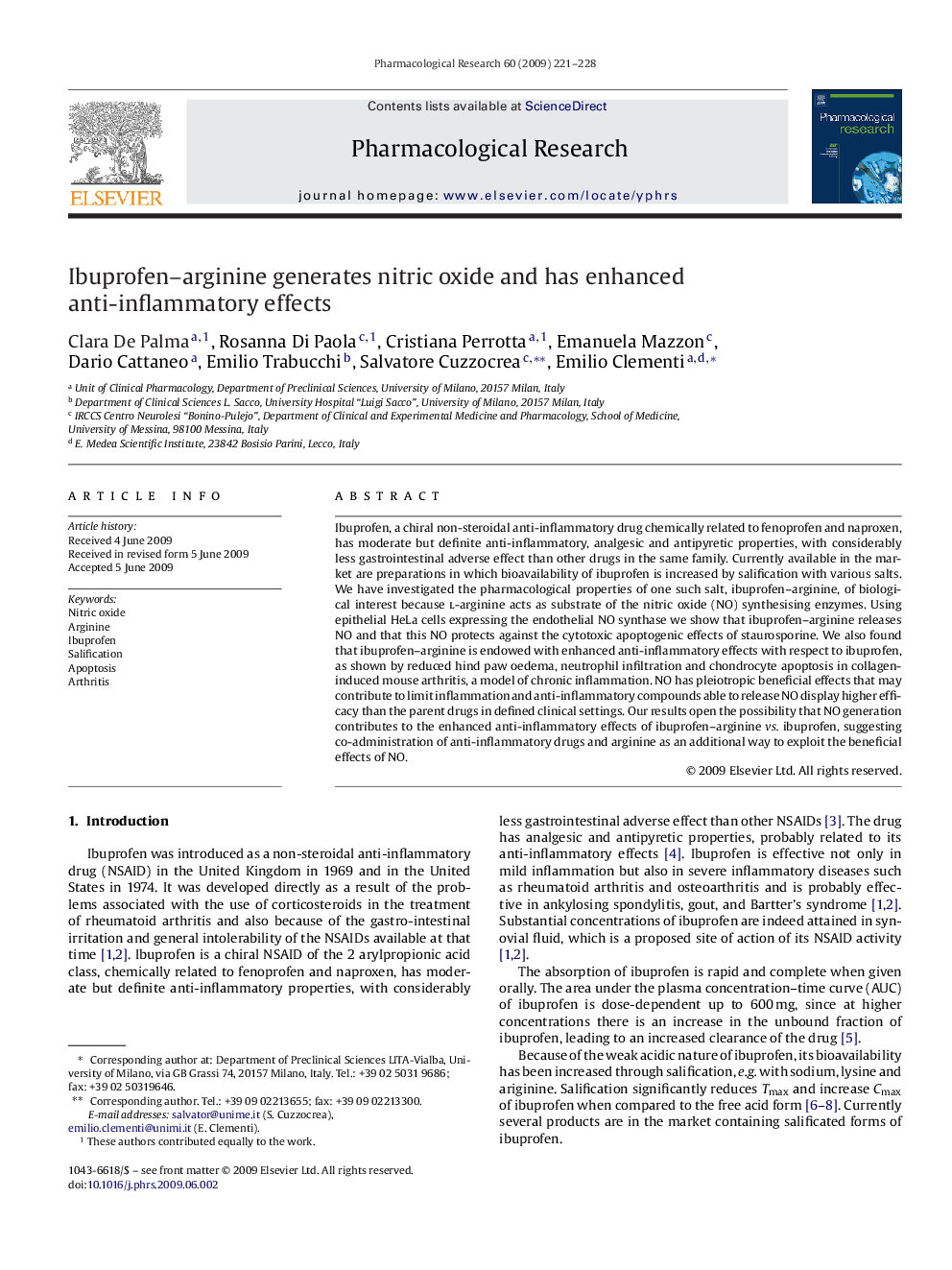| کد مقاله | کد نشریه | سال انتشار | مقاله انگلیسی | نسخه تمام متن |
|---|---|---|---|---|
| 2562833 | 1127298 | 2009 | 8 صفحه PDF | دانلود رایگان |

Ibuprofen, a chiral non-steroidal anti-inflammatory drug chemically related to fenoprofen and naproxen, has moderate but definite anti-inflammatory, analgesic and antipyretic properties, with considerably less gastrointestinal adverse effect than other drugs in the same family. Currently available in the market are preparations in which bioavailability of ibuprofen is increased by salification with various salts. We have investigated the pharmacological properties of one such salt, ibuprofen–arginine, of biological interest because l-arginine acts as substrate of the nitric oxide (NO) synthesising enzymes. Using epithelial HeLa cells expressing the endothelial NO synthase we show that ibuprofen–arginine releases NO and that this NO protects against the cytotoxic apoptogenic effects of staurosporine. We also found that ibuprofen–arginine is endowed with enhanced anti-inflammatory effects with respect to ibuprofen, as shown by reduced hind paw oedema, neutrophil infiltration and chondrocyte apoptosis in collagen-induced mouse arthritis, a model of chronic inflammation. NO has pleiotropic beneficial effects that may contribute to limit inflammation and anti-inflammatory compounds able to release NO display higher efficacy than the parent drugs in defined clinical settings. Our results open the possibility that NO generation contributes to the enhanced anti-inflammatory effects of ibuprofen–arginine vs. ibuprofen, suggesting co-administration of anti-inflammatory drugs and arginine as an additional way to exploit the beneficial effects of NO.
Journal: Pharmacological Research - Volume 60, Issue 4, October 2009, Pages 221–228